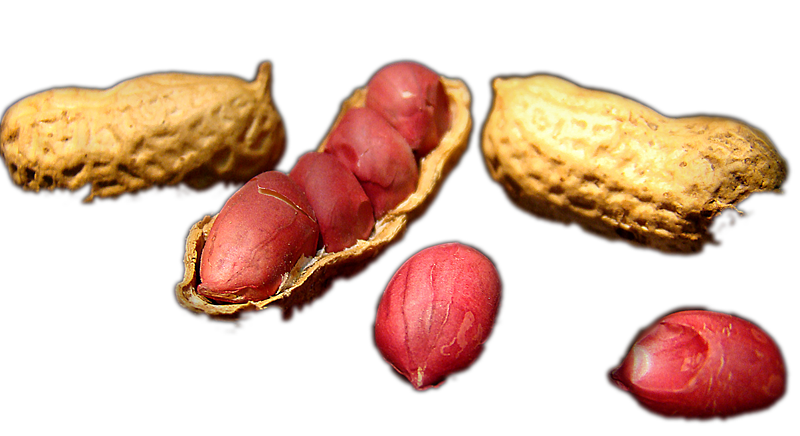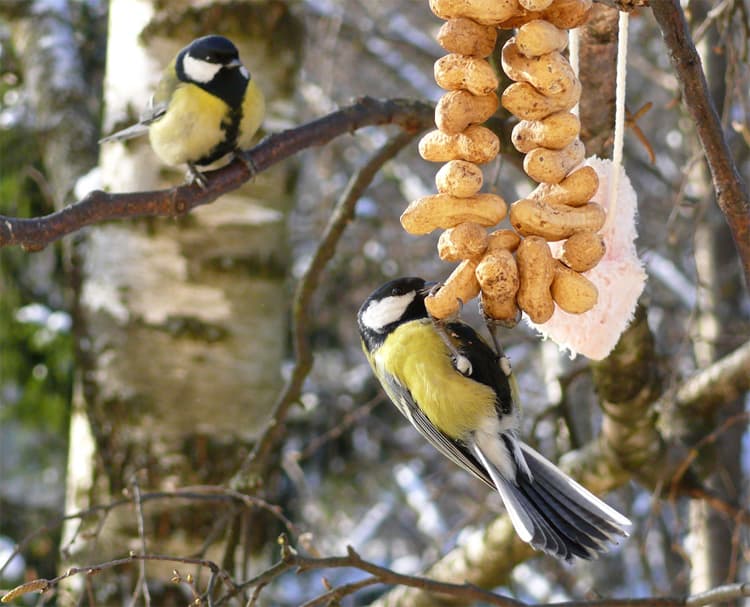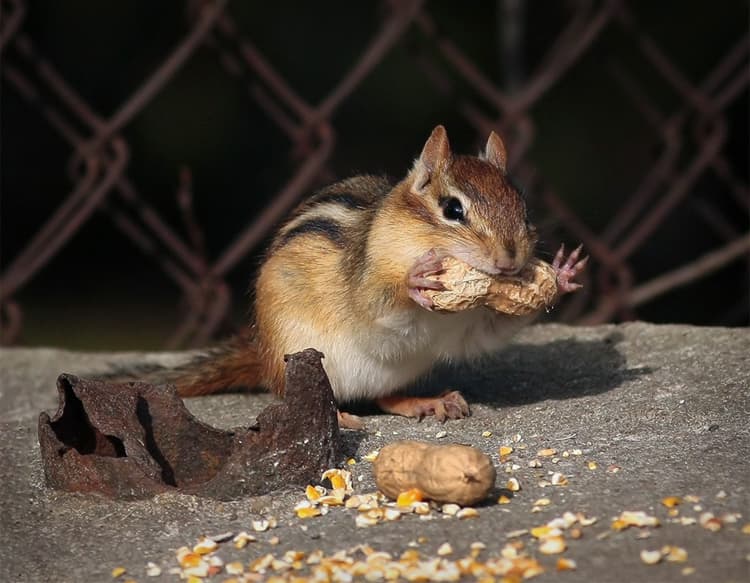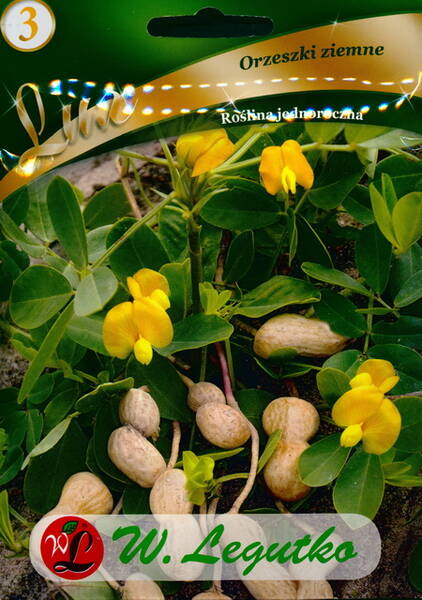Arachis hypogaea is the botanical name for the Peanut. The Peanut, also called Goober and Groundnut, is a frost-tender annual native to Brazil. Once mainly a warm climate crop, they have gained popularity in home gardens because early-maturing varieties with large seeds have been developed. These attractive plants are neat and resemble clovers. They grow about 12 feet high and 2 feet wide. It produces two kinds of flowers; male (staminate) flowers, which are bright yellow and quite pretty, and female (pistillate) flowers, which are inconspicuous. After the female flowers are fertilized, they turn face down and corkscrew themselves into the ground. Each corkscrew, or peg, grows 1 to 4 Peanuts, 2 to 6 inches underground. The Peanut consists of two to five seeds, which are encased in a papery shell.
Potting of peanut.
Peanuts should be grown in full sun, in sandy or sandy loam soil about 12 inches apart, in rows 2 to 22 feet apart. Hilling up the soil around the plants is beneficial, though not necessary.
Once the pods begin to ripen, stop irrigation. Once frost has killed the plants, dig up the plants with a spading fork and air-dry for several days. It would help if you have someone lift and gently shake the plants while you loosen the soil underneath. Don t expect to find all the Peanuts; some will escape and, in warm climates, germinate. You can carefully dig up these small plants and transplant them.
Propagation of peanut.
Shell out seeds just before planting. When the soil is warm enough, plant the seeds a foot apart in pairs, in rows 2 to 22 feet apart.

How to grow peanuts in our climatic conditions? And in general, is it possible? What are the features of peanut farming?
How to get a good harvest, and what are the reasons for the failures when trying to grow it?
The peanut is not a new and unusual plant for us, but, nevertheless, in the northern countries it is still a rarity.
This is a southern plant, but experiments with cultivation turned out to be successful: in the conditions of the middle lane, the harvest in the first year is (depending on the weather) 10-15 beans and, accordingly, 30-40 nuts per bush.
Peanuts are planted with germinated seeds (it does not ripen in our open ground), but it grows well in a greenhouse between tomatoes (bushes are only 15 cm low), you can plant them on a regular garden bed and cover with a film. Of course, the harvest will not be as good as in the south, but it is very interesting to get a harvest from such a southern, almost tropical plant!
Peanut is an annual herbaceous plant of the legume family, forming a small bush of a branched stem and parotid leaves, the flowers are small, yellow, after flowering a bean is formed - non-cracking, with a constriction and a rough peel; the seeds contained in it are called "peanuts".
For their formation, conditions that are not quite usual for legumes are necessary: flowering occurs like in other plants, but the flowers live only one day.
They bloom in the morning, then pollination occurs, and by the evening they already dry up, so often flowering is almost imperceptible, but nevertheless, up to 200 flowers are formed on one plant per season, for the fertilization of which special conditions are also required, therefore, only a small part of the flowers is formed ovary.

The development of the ovary is especially interesting: after fertilization, they lie on the soil and begin to "dig in", the development of the fetus occurs only in the ground, and the ovaries remaining on the surface do not develop. Therefore, two important conditions for their development should be observed - loose light soil and periodic hilling 2-3 times per season.
Peanuts come from South America, where their wild species grow as perennials, but in our country, of course, the seeds do not winter in the soil.
The origin determines the following conditions for the normal growth of peanuts: a sufficiently high temperature and medium humidity (because at low temperatures the flowers can fall off, and at high humidity, they can be affected by fungal diseases). Plants develop well at temperatures from +20 to +27°C (below +15° - they stop growing, and above +30° - growth also stops).
About 700 species of cultivars of peanuts are distributed in the world, and although its main plantings are concentrated in the southern regions, some enthusiastic and experienced gardeners grow it in more northern latitudes. The most common problem is that peanut seeds do not germinate well. There may be various reasons for this, related to damage to the seeds by insects, birds, or planting with dry seeds.
Before planting, peanut seeds need to be germinated or you can grow two-week seedlings (more precisely, sprouts in cups with a light substrate) - this will speed up ripening and protect the seeds from the European mole cricket (Gryllotalpa gryllotalpa), which often (almost always in its habitats) damages peanut seeds in the same way as large seeds of all other crops planted in the ground (to avoid this, it is necessary to plant all large seeds already germinated and use baits from various plant residues to catch the European mole cricket or a special drug to destroy European mole cricket).
At first, seedlings also need protection from birds, which can destroy all peanut plantings.
Soak the seeds begin in the last days of April. They germinate within 10 days. Before germination, the seeds can be soaked in a weak solution of potassium permanganate. To increase cold resistance, the hardening of seeds that have hatched can be applied. During the day they keep in a cool room - about +2 +3 ° C (19 hours), and at night in a room with room temperature. The duration of such hardening for peanuts is 2-3 days, this technique can be used for all heat-loving plants.
When seedlings appear, the seeds are planted in cups, in a common box after 5 cm, or in a permanent place (planted after 20 cm, between rows 20-25 cm, plantings are covered with an arc shelter, it is removed only in very warm weather).
A trench for peanuts can be prepared directly in the spring, but it is advisable to prepare a warm one in the fall (you can do it in early spring). A trench is dug in place of the future ridge.
The trench does not have to be deep - it can simply be a recess in place of the future ridge on the bayonet of a shovel below the soil level. It all depends on how much plant waste you need to bury. However, it is also not recommended to make a trench that is too deep - waste at great depths will rot poorly and may not decompose in one season.
When digging a trench, the upper and lower layers of soil are removed separately. Plant residues (except for legumes) are piled at the bottom of the trench, sprinkling them with the bottom layer of soil, and plant waste can be sprinkled on top with semi-rotted compost and covered with the top layer of earth.
Such ridges are good not only for peanuts but also for other heat-loving crops. However, any plants will respond to such conditions with an increase in yield. Cucumbers, pumpkins, corn and tomatoes develop especially well on such warm ridges...
Plant waste laid in a trench not only warms the roots of plants by releasing heat but also acts as a fertilizer by releasing the carbon dioxide that plants need. With a healthy soil microflora, after a month, all waste should decompose, and after 2 months, turn into warm nutrient soil.

Peanut, Goober, Groundnut, Pindar, Monkeynut. Bot.: Arachis hypogaea L.












